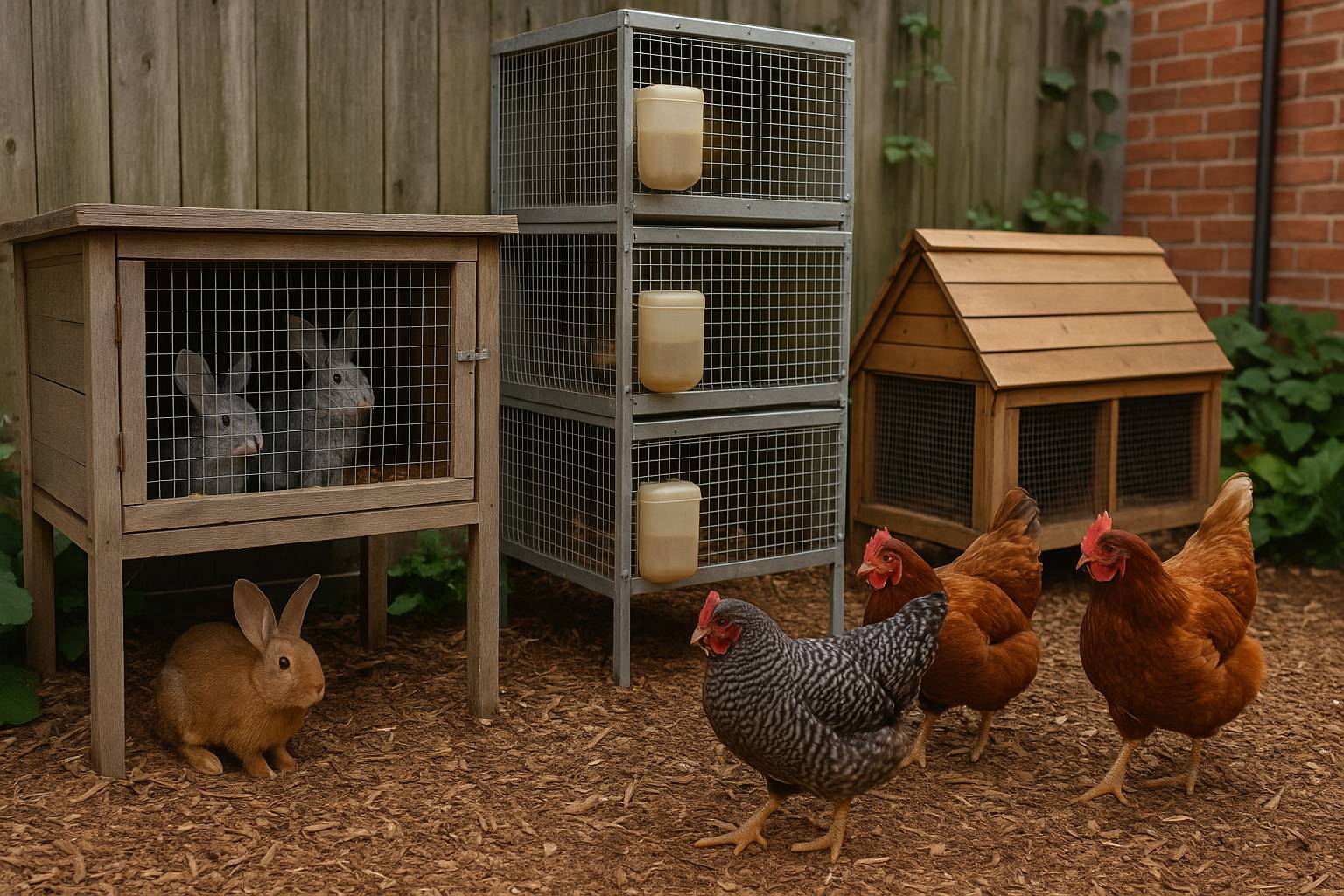Not every prepper has access to sprawling acreage, but that doesn’t mean you can’t raise your own meat. Even a suburban backyard—or a rooftop, balcony, or indoor setup—can sustain small livestock if you choose wisely. For those preparing in tight spaces or urban areas, certain animals provide protein, self-reliance, and resilience without demanding a full-scale homestead.
Let’s look at the best low-land meat producers that fit the needs of small-space preppers.
1. Rabbits – The Perfect Urban Meat Source
Rabbits are one of the most efficient small livestock animals ever domesticated. They’re quiet, clean, and reproduce quickly—making them an ideal choice for anyone with limited land or even just a sheltered backyard.
Why They Work:
- They can be raised entirely in hutches or stacked cages.
- Three does and one buck can produce up to 200 pounds of meat per year.
- Rabbit meat is lean, mild, and cooks much like chicken.
Prepper Advantage:
Rabbit manure can be used directly in gardens without composting, helping you sustain a small food system in a closed loop.
2. Quail – The Space-Saving Bird
Quail are rapidly becoming a favourite among urban preppers. They’re small, quiet, and mature in as little as six to eight weeks.
Why They Work:
- Require minimal space—about one square foot per bird.
- Provide both meat and eggs.
- Can be raised in stacked wire cages in a shed or garage.
Prepper Advantage:
Quail require less feed than chickens and thrive on simple diets, making them sustainable when feed resources are scarce. They’re also legal in many urban zones where chickens are restricted.
3. Chickens – The Classic Backyard Producer
Chickens remain the gold standard for small-scale meat and egg production. While they need a bit more room than rabbits or quail, even a tiny yard or mobile tractor setup can sustain a small flock.
Why They Work:
- Dual-purpose breeds can provide both meat and eggs.
- Feed can be supplemented with kitchen scraps, weeds, and insects.
- Portable coops allow rotation and natural fertilization of lawns or gardens.
Prepper Advantage:
Chickens are incredibly versatile. They not only supply protein but also contribute to soil health and pest control. In a grid-down scenario, their utility goes beyond the plate.
4. Ducks – Tougher Than They Look
If you’ve got even a small backyard or patio, a few ducks might be worth considering. They’re hardier than chickens and thrive in cooler Canadian climates.
Why They Work:
- Can be raised without a large pond—just a small kiddie pool will do.
- Produce rich, flavorful meat and nutrient-dense eggs.
- Resistant to many common poultry diseases.
Prepper Advantage:
Ducks are self-foraging champions. In wet or buggy areas, they’ll find much of their own feed, cutting down on costs and dependence on commercial supplies.
5. Pigeons (Squab) – The Forgotten Urban Meat Bird
Pigeon meat—known as squab—has been prized for centuries. These birds are ideal for covert or discreet urban meat production.
Why They Work:
- Require very little space—can live in rooftop lofts or small aviaries.
- Breed year-round, producing up to 10 pairs of squab per year per breeding pair.
- Self-sufficient foragers if allowed outside.
Prepper Advantage:
Pigeons are nearly silent compared to chickens and require minimal feed once established. They’re also extremely resilient and reproduce consistently.
6. Fish – Aquaponic and Barrel Systems
Raising fish doesn’t require a pond—only a few barrels or an indoor tank system. Species like tilapia, catfish, or trout can be grown in aquaponic setups that recycle water through plants.
Why They Work:
- Can be raised indoors or in garages.
- Integrate with vegetable production (fish waste feeds plants).
- Year-round production potential.
Prepper Advantage:
Fish systems can run off solar-powered pumps and provide a renewable protein source independent of land or weather conditions.
7. Insects – The Ultimate Survival Protein
While it might make some people squirm, crickets and mealworms offer a compact and sustainable meat alternative. They can be raised in bins indoors with minimal space and almost no smell.
Why They Work:
- Require almost no water or feed.
- Reproduce quickly and are ready to harvest within weeks.
- Extremely high protein content (up to 70% by weight).
Prepper Advantage:
Insects convert waste into edible protein more efficiently than any mammal or bird. In a true grid-down or famine scenario, they may be the last reliable source of fresh protein left standing.
Final Thoughts
You don’t need acres of land or a barn to raise your own meat. With a little creativity and planning, small-scale livestock can thrive on balconies, backyards, or even in indoor systems.
For preppers, the goal isn’t luxury—it’s sustainability. Whether it’s a trio of rabbits, a stack of quail cages, or a quiet fish tank cycling beneath grow lights, every bite of home-raised meat is one less meal you depend on from the outside world.
Preparedness begins not with stockpiles—but with self-reliance.
📘 Acres of Preparedness: Planning the Last Safe Place
An in-depth guide to building your own self-sufficient retreat in Canada. From land selection to livestock management, this book helps preppers design their final refuge with purpose and precision.






